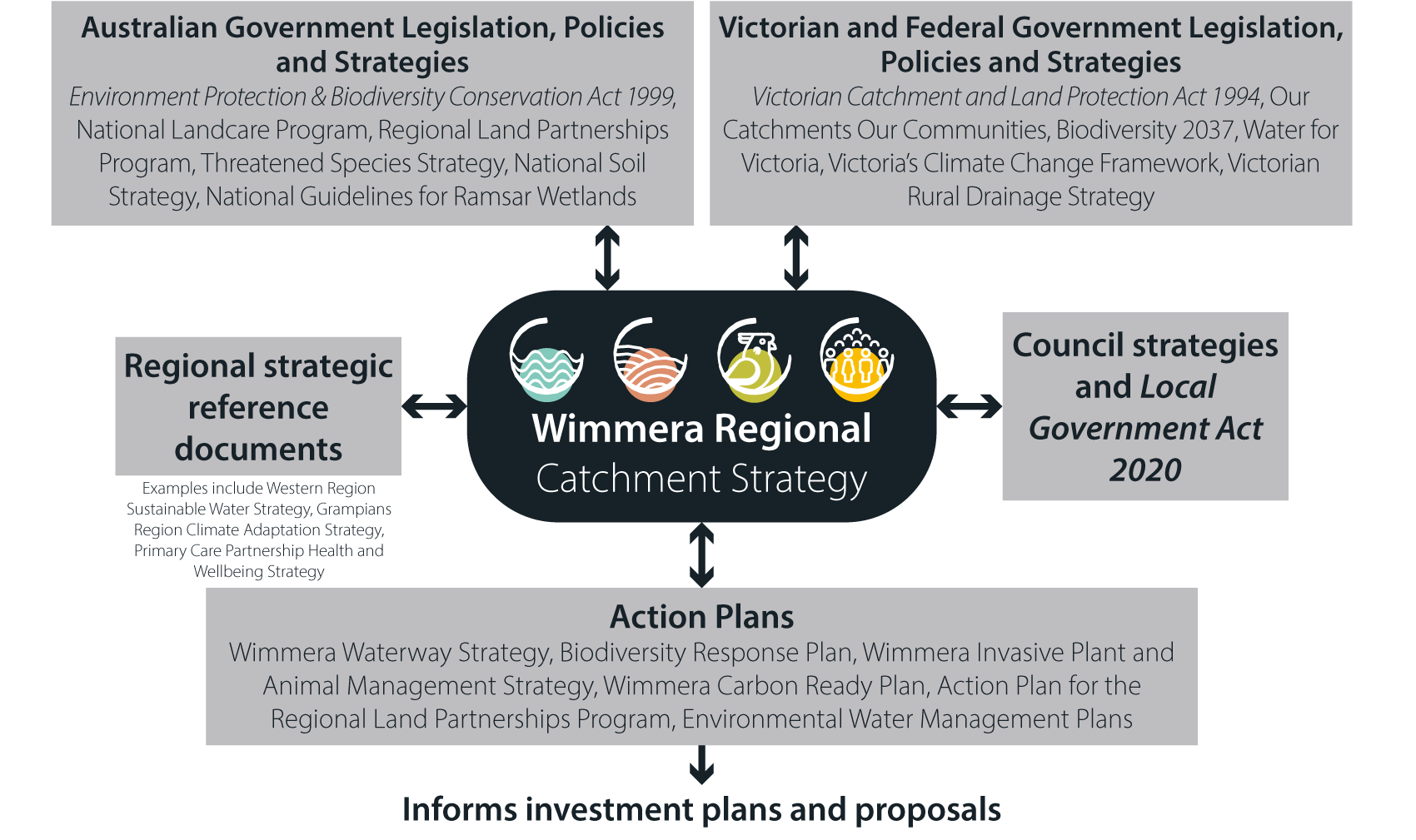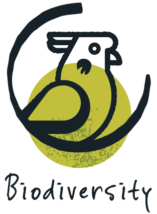The Wimmera Regional Catchment Strategy is based around four Themes. These Themes are the building blocks of healthy and resilient environments and the focus of integrated catchment management. | |||
The Water Theme includes the three sub-themes of: Rivers and Streams, Wetlands and Groundwater.
Each Theme and sub-theme section describe:
- The characteristics, values and importance of the Theme to the region,
- Current condition and significant trends,
- Major challenges, threats and drivers of change,
- Desired outcomes intended to be achieved over 20 years or more and 6 years, and
- Complementary plans that provide guidance on priority directions for achieving the outcomes.
Medium-term 6-year outcomes are intended to provide steppingstones towards achievement of the long-term 20- year outcomes.
The outcomes seek to be “SMART,” meaning they are:
- Specific about what the Wimmera’s stakeholders and community seek to achieve for the region’s land, water, biodiversity and community.
- Measurable. Progress towards achieving the outcomes will be measured over the life of the Regional Catchment Strategy (RCS). Indicators for measuring the outcomes are set out in a separate Outcomes Monitoring Plan for the Wimmera RCS.
- Achievable. Outcomes are realistic and likely to be achieved given the realities of resources, community participation and climate change. Long term (20-year) outcomes are aspirational and some may require extra work beyond 20 years to be fully realised.
- Relevant, so that achieving the outcomes will contribute to the region’s Vision for “a healthy Wimmera catchment where a resilient landscape supports a sustainable and profitable community.”
- Timebound, in that the region will seek to achieve the outcomes over 6 and 20-year timeframes.
There are many important things to achieve for integrated catchment management in the Wimmera. The outcomes included in the Regional Catchment Strategy (RCS) are considered the highest priorities for each Theme based on the best available science, and knowledge and information contributed by stakeholders and the regional community. Outcomes included for some sections may also be relevant for other Themes or Local Areas. They have only been included in the sections where they are the highest priority. Each outcome is important, and they are not listed in any order of priority.
The Wimmera RCS does not contain targets that specify management outputs. Regional sub-strategies and action plans like the Wimmera Waterway Strategy and Carbon Ready Plan play an important role in setting out the specific management actions and priority locations for activities that will achieve the RCS’s outcomes. Current regional sub- strategies and actions plans are listed in Figure 4.
There is currently a gap in that there is no holistic regionwide action plan for biodiversity. This gap will be filled by February 2022, with input from regional stakeholders, bringing together and consolidating existing regional planning work including Biodiversity Response Planning led by Department of Environment, Land, Water and Planning, Conservation Action Planning by Parks Victoria, and parts of the Carbon Ready Plan and Action Plan for the Regional Land Partnerships Program led by Wimmera CMA and describing how the RCS will contribute to and report on the targets set out in Biodiversity 2037.

Figure 4: Policy context for the Wimmera Regional Catchment Strategy







